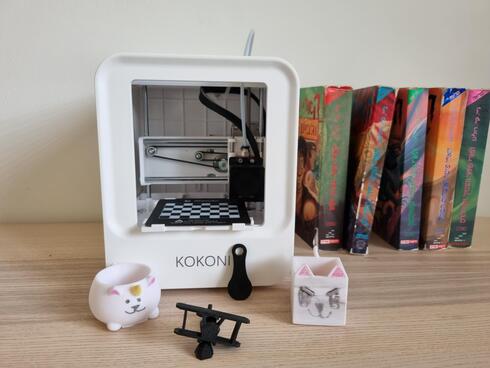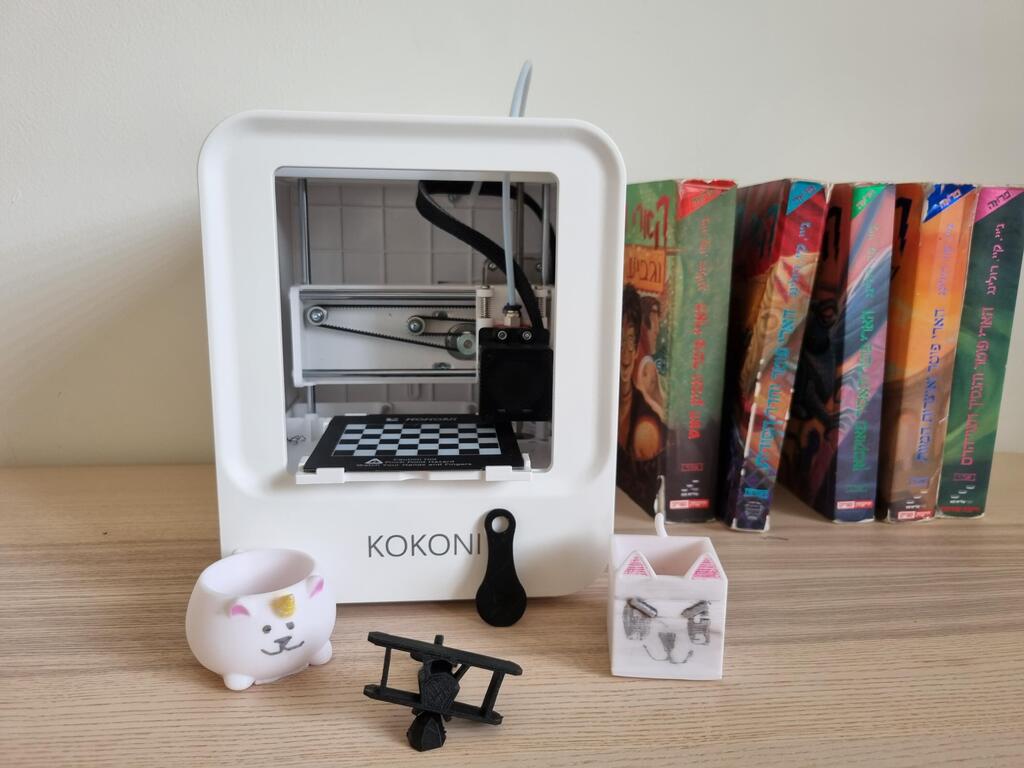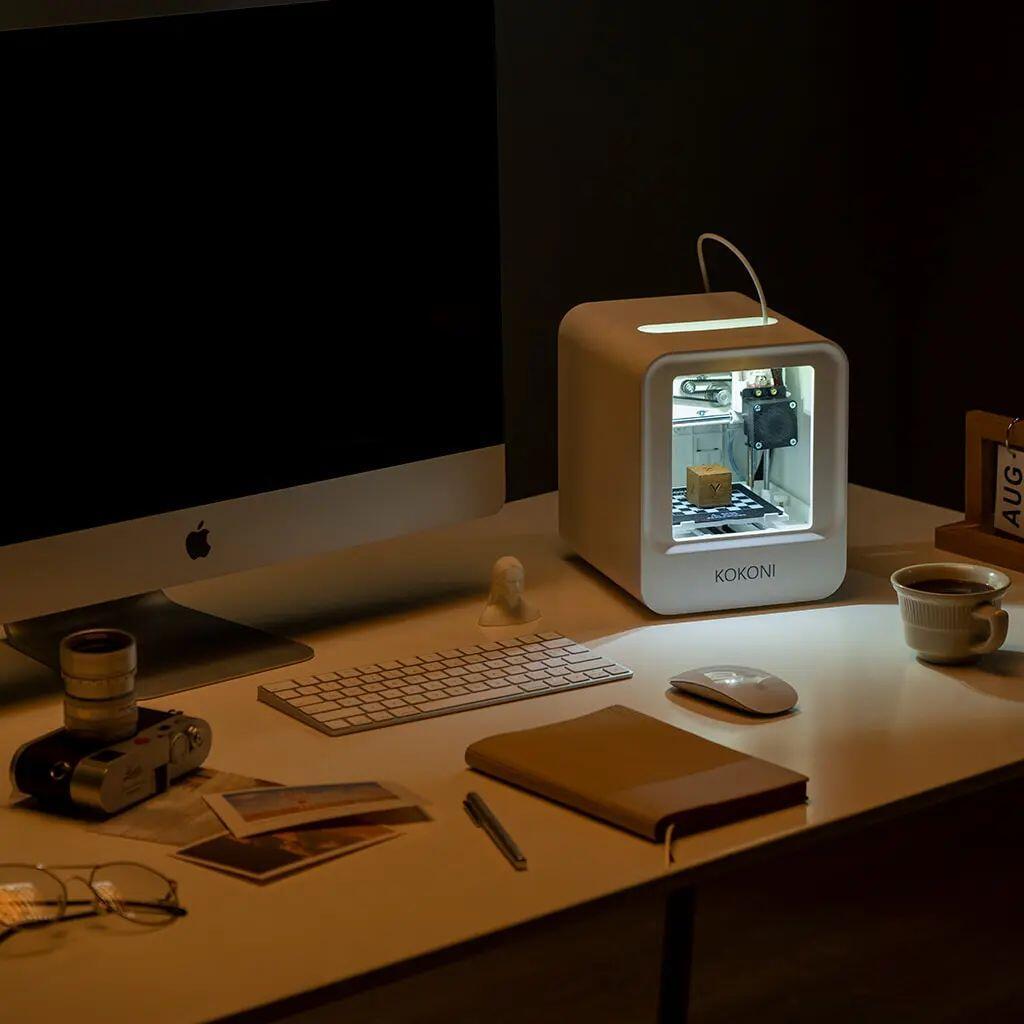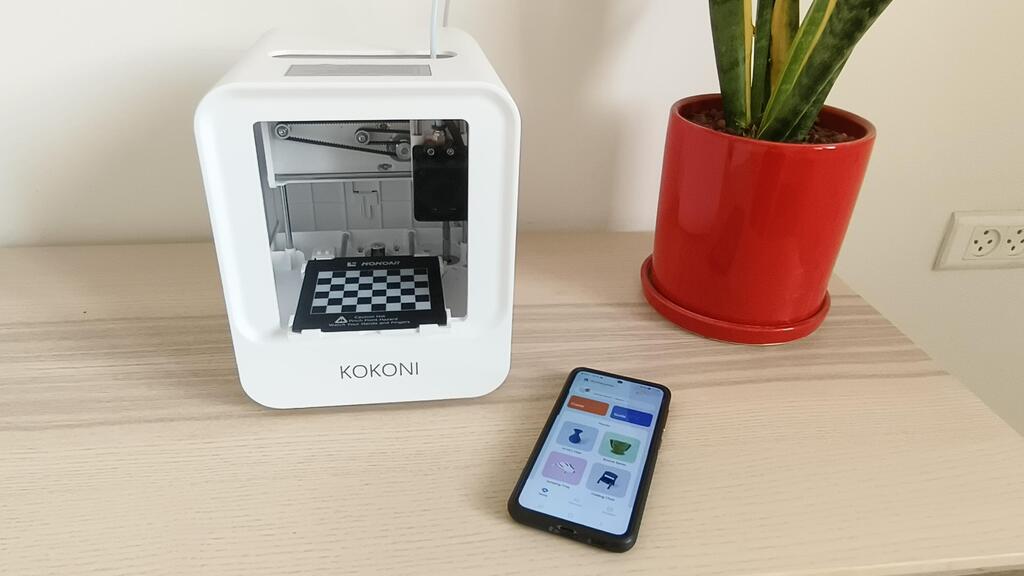
Gadget review
Kokoni EC1: The troubled path of home 3D printers
“When functioning well, the Kokoni printer can be an enjoyable and addictive toy. However, the path to successful prints can be filled with failed attempts and errors, which can be frustrating,” writes Itai Smuskowitz, CTech's gadget critic
Home 3D printers have held a shining promise for a decade. Prices have decreased over the years, but it hasn't yet become a household item; rather, it remains a somewhat expensive toy.
Another challenge is the user interface; it needs to be user-friendly and convenient enough for home users, in order to attract a broader audience beyond "early adopters" and gadget enthusiasts.
What's intriguing, however, is that the Kokoni printer has some interesting aspects despite its limitations. It's relatively small and easy to install.
The Kokoni printer's compact design takes up minimal space, measuring 23 cm in height, 19 cm in width, and 27 cm in depth, including the protruding print cartridge at the back. Overall, it's comparable in size to a game console or a small coffee maker. These external dimensions indicate that the available space for printing isn't large. It can handle models with dimensions around 10 cm in width and depth, and a height of about 6 cm.
The printer lacks a display screen for operation or even indicator lights. Instead, there's a power button at the back to turn it on and off, and another button to facilitate network connection. After connecting the printer to power and turning it on, the setup process continues through the app. Installation instructions led to an APK file download instead of the app store, which was a slightly strange step. The login screen initially appeared in Chinese, but I navigated through it to switch to English instructions.
The application features pre-made printing models. However, it lacks a search function or sorting options based on model size or printing duration. The available models can be scrolled through or sorted by categories. After selecting a model to print, additional information is displayed, including size and estimated printing time. The printing time is categorized as short (around an hour or less), medium (one to two hours), or long (two hours or more). It's worth noting that the printer's actual speed often deviates from these estimates.
During printing, the application doesn't provide an accurate time estimate beforehand or while printing; it only displays the printing progress in percentages. This lack of detailed time information is a drawback.
The printer operates quietly, which is a positive feature. However, there are several communication problems. The printer lacks a display screen or indicators, making communication issues more frustrating. For example, some models wouldn't start printing despite the application showing the process had begun. Occasionally, error messages appeared with suggestions for resolution. Even without such messages, canceling the process and trying again didn't always solve the problem. The company's solution, as mentioned on their website, is to delete the printer from the application and reinstall it. While it works, repeating this process multiple times is cumbersome.
The printer works with one color at a time, based on the printing material (filament) in the cartridge. The app displays the cartridge's condition, indicating how much filament remains. After using a white cartridge for some time, I switched to a cartridge with black filament. The app provided clear instructions for this process. Interestingly, upon returning to the white cartridge, the app indicated it was 100% full, despite using it for multiple prints that had depleted its material.
The printer also supports importing models from external sources, whether self-created or downloaded from websites that host 3D models. This action is performed on the Kokoni website rather than within the app. After uploading print files to the website, they appear in the application.
External websites provide more convenience for finding models. For example, the website "printables.com" allows filtering by printing material and printer nozzle size, and it also supports searches. On this website, various models such as phone stands, kitchen accessories, design items, game parts, and toys can be found. I downloaded some models from this site, uploaded them to Kokoni's service, and was able to print them.
The application also offers the option to create a model using a photo. However, this service is still experimental and involves creating a 3D avatar. While the concept seems straightforward in advertisements, the actual process is more complex. It requires photographing an object from different angles covering 360 degrees, including from above. The app recommends taking at least 25 photos this way, and the process is time-consuming.
Creating an avatar is simpler; you can create a model by taking a photo of a person or using an existing image. After uploading it to the application, a model is generated for printing.
In conclusion, when functioning well, the Kokoni printer can be an enjoyable and addictive toy. It enables the creation of various toys, small game parts, medical accessories, and more. However, the path to successful prints can be filled with failed attempts and errors, which can be frustrating. To improve, the Kokoni printer needs to address its communication issues and offer more reliable print time estimates. While it holds promise, it currently falls short of delivering a consistently smooth 3D printing experience.
















